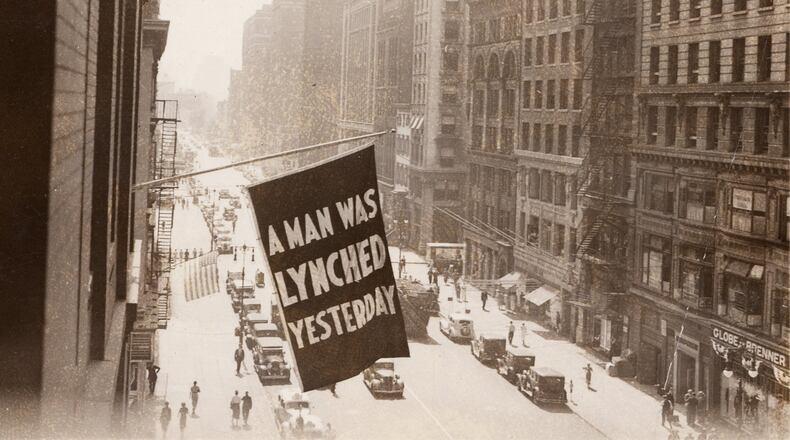Disorderly conduct. Sued a white man. Frightened a woman. Wife of murderer. Father of murderer. Disputed white men. Testified against white men for attempted rape of a Negro woman. African colonization. Cause unknown. All are among the reasons black people were lynched in Georgia, according to a historical tally of lynching by Tuskegee University.
There was John Moody, a farm hand who in 1901 decided to leave his white employer in Bryan County to work for another white farmer. According to newspaper accounts from the time, the first employer, incensed, gathered a group of “white caps,” a precursor of the Ku Klux Klan, captured Moody, shot him and then hanged him.
“If he’d been white, the farmer might have sued him, not organized a mob to kill him,” said E.M. Beck, a retired sociologist at the University of Georgia and the co-author of “A Festival of Violence: An Analysis of Southern Lynchings 1882-1930.” “It was a form of labor control. It was white supremacy.”
There was the case of Jesse Stater (also known as Jesse Slater), who was accused of writing an “insolent letter to a white woman” and was lynched by a mob in November 1917.
And while black men were the most frequent targets of lynch mobs, Mary Turner was but one of many black women who fell prey to the killers (See accompanying article). Sisters Eula and Ella Barber were shot to death by a throng of 100 people in Jasper County in January 1915. They, along with their father, Daniel, and brother, Jesse, were accused of challenging a sheriff who'd come to their juke joint. All four were arrested, but the mob rousted them from jail. Daniel was shot then hanged. Eula, Ella and Jesse where shot repeatedly until there bodies were nearly in pieces.
» Database of hundreds of lynchings in Georgia
“African-Americans could be lynched for everything to anything that a white person could construe as a threat to white supremacy,” said Karlos K. Hill, author of “Beyond the Rope: The Impact of Lynching on Black Culture and Memory.”
“If a black man bumped into a white woman, that could be construed as an affront to white supremacy. If he glanced at her too long, the idea was that he’d violate her, that he’d attempt to rape her. The glance was an affront to white supremacy by looking at a woman he shouldn’t. Whites jealous over African American property ownership could prompt a lynching. So, it really depended on the whims of white people.”
» Don't go to Georgia, he was told. But he had to know who lynched his great-grandfather
The perception is that a lynching always involved a certain means of death — whether by hanging or shooting or burning. .
“It’s not the method in which a person is killed, it’s the context in which they are killed,” said Hill, a professor of African and African-American studies at the University of Oklahoma. “That context is when the person is summarily, lethally and brutally punished for an alleged crime and denied due process of law. That cocktail of things is what we call a lynching. It’s less about being hung, shot or dragged to death.”
» I investigated my own family's role in 4 lynchings
In the early 1900s, at the height of lynchings in America, the NAACP tried repeatedly, and unsuccessfully, to persuade Congress to pass anti-lynching legislation.
For most of the ’20s and ’30s, the NAACP would fly a stark black and white flag outside its New York City headquarters each time word came of a lynching. The flag read simply: “A Man was Lynched Yesterday.” During that period, Georgia alone gave the civil rights organization at least 73 occasions to fly the grim banner. But long before, Georgia was a lethal place for African-Americans who ran afoul of Jim Crow laws or the sensibilities of white people.
Consider the fate of the Padgett family of Reidsville. Sim Padgett was accused of helping a friend accused of assaulting a white woman. A mob came to Padgett’s house demanding that he surrender. When he refused, they opened fire on his house. Padgett shot back. In the shootout Padgett was killed, but so was his 10-year-old daughter, Dosia.
The mob then went into the house and found Padgett’s wife, Sula, and his 21-year-old son, Wilford, both shot but alive. The mob dragged them out, intent on taking them to the local jail. Along the way, however, another mob of 75 people intercepted the surviving Padgetts. They took Sula and Wilford, made them stand in front of the swelling crowd, then riddled mother and son with gunfire.
The Latest
Featured





